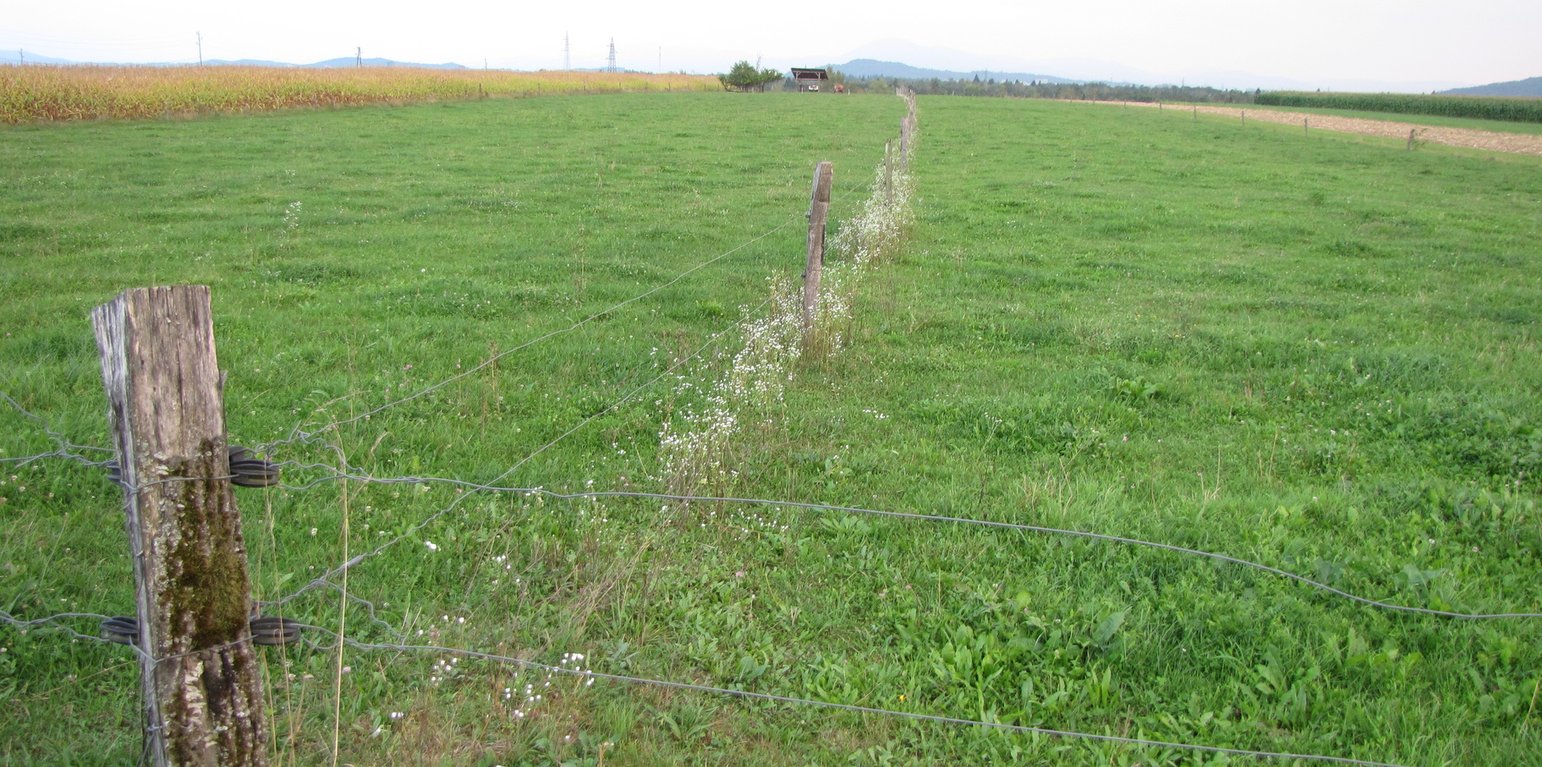



1.The technology is applied in flatlands of Ljubljana with an average altitude of 350 m.a.s.l. The average annual precipitation is 1400 mm. The area is characterized with often stormy precipitation events and occasional droughts. Silty loam soils in the area are moderately deep to deep with medium soil organic matter. Area has good availability of surface water and groundwater of good drinking quality. Area has medium biodiversity without salinity and flooding problems. Sedentary agriculture with mixed or commercial agriculture is practiced with less than 10% of income from off-farm. Individual farm households are average in wealth and they are basically mechanized/motorized. The examined farm household, as all housholds in the region has good access to all services and infrastructures. Farm is medium in scale with land owned partly by the farmer and partly leased from other private owners.
2. Cropland area was converted to permanent grassland or pasture land by sowing of grass and by a fence as protection. Grazing is organized in a rotation system between suckler cow's pasture and paddocks.
3. The purpose of the technology is to use the natural potential of the soils. As soils are shallow with low water holding capacity permanent grassland is much more resilient and adapted to the drought; permanent grassland needs not only less water, but as well less nutrients. Grass has the capacity to grow well after any rainfall event at any time of the growing period. During drought when, maize fields get dry, grasslands subsist and just wait until the rain falls. While maize yield is lost in drought years, grassland can sustain and nurrish animals until mid-autumn. Another advantage of grassland is its building up of organic matter in the soils.
4. Main activities to establish the grazing fields are fences and electricity instalments together with grass sowing. Main maintenance activities are regular checking of the fence and electricity power and regular cleaning cuts to remove the weed at least once a year.
5. Benefits are:
(1) soils are less exposed to adverse weather conditions like drought
(2) increase of soil organic matter
(3) better resilience of the land user against production loss
(4) rise of soil biodiversity
(5) better animal welfare
(6) land user benefit from growing customer interest for meat products.
6. Land users like this better use of land resources, as less productive soils have gained new meaning. But they, on the other hand, also blame the loss of cropland needed for their maize production.
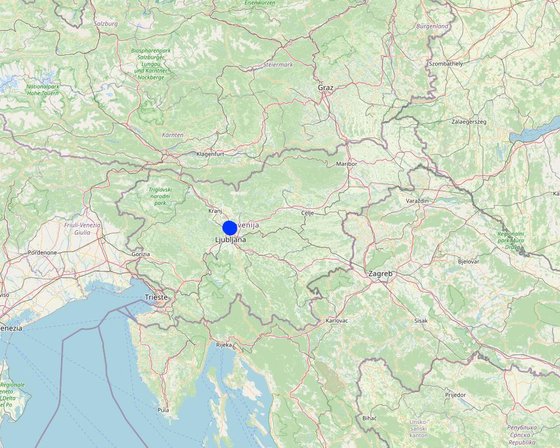
Lugar: Municipality of Ljubljana, Eslovenia
No. de sitios de Tecnología analizados: 2-10 sitios
Difusión de la Tecnología: distribuida parejamente sobre un área (approx. < 0.1 km2 (10 ha))
¿En un área de protección permanente?:
Fecha de la implementación: 2000; 10-50 años atrás
Tipo de introducción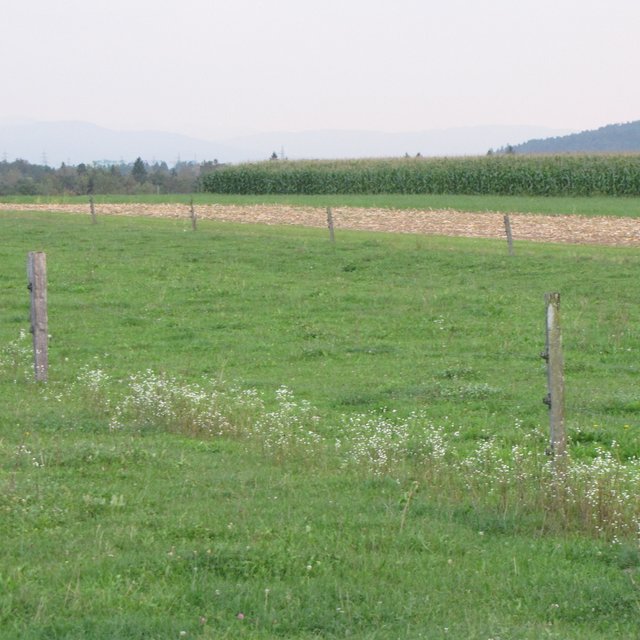
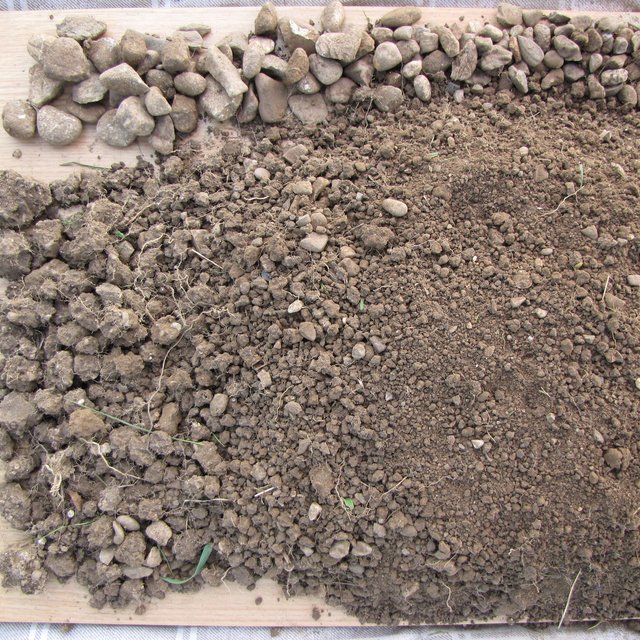





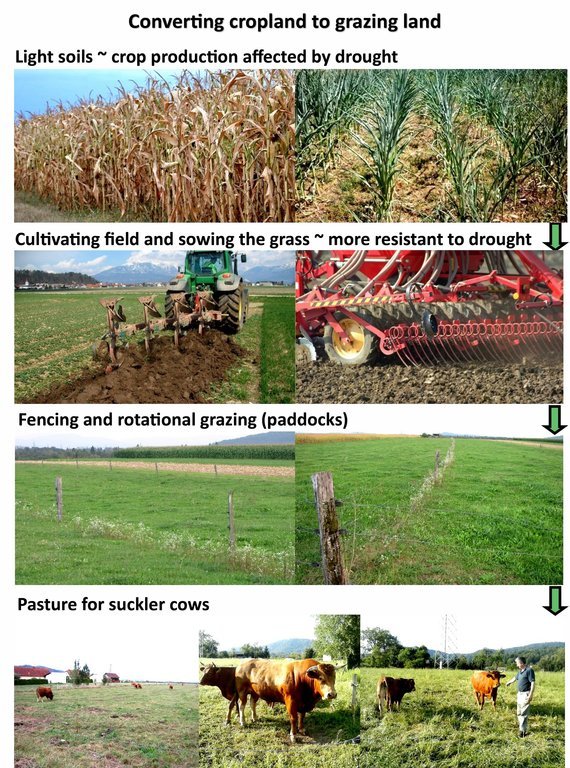
| Especifique insumo | Unidad | Cantidad | Costos por unidad (EUR (€)) | Costos totales por insumo (EUR (€)) | % de los costos cubiertos por los usuarios de las tierras |
| Mano de obra | |||||
| Fence installation | EUR/hour | 20,0 | 6,25 | 125,0 | 100,0 |
| Land preparation | EUR/hour | 2,0 | 6,25 | 12,5 | 100,0 |
| Equipo | |||||
| Fence (pillars, wires and electric fence energiser) | EUR/ha | 3,0 | 266,0 | 798,0 | 100,0 |
| Material para plantas | |||||
| grass seeds | EUR/ha | 3,0 | 200,0 | 600,0 | 100,0 |
| Costos totales para establecer la Tecnología | 1'535.5 | ||||
| Costos totales para establecer la Tecnología en USD | 1'725.28 | ||||
| Especifique insumo | Unidad | Cantidad | Costos por unidad (EUR (€)) | Costos totales por insumo (EUR (€)) | % de los costos cubiertos por los usuarios de las tierras |
| Mano de obra | |||||
| Checking the fence | EUR/hour | 8,0 | 6,25 | 50,0 | 100,0 |
| Equipo | |||||
| electrical isolators for wooden pillars | pcs | 100,0 | 0,2 | 20,0 | 100,0 |
| Indique los costos totales para mantenecer la Tecnología | 70.0 | ||||
| Costos totales para mantener la Tecnología en USD | 78.65 | ||||
Animals have their own requirements. They need drinking water, they need to be relocated, daily observed and watch over in case of broken fence. Thus, the simplified management is not leading to a decrease of workload
On light soils there is no differences. On clay soils it is rather worse.